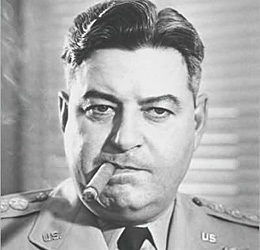
|  |  |  Americas & Beyond Americas & Beyond  
Cuban Missile Crisis Ends, Oct. 28, 1962
 Andrew Glass - Politico Andrew Glass - Politico
go to original
October 28, 2010


| | Gen. Curtis LeMay told Kennedy that it was “the greatest defeat in our history” and that the United States should have invaded Cuba. |  |
On this day in 1962, the Cuban missile crisis, which threatened to start a superpower war, came to a close when Soviet leader Nikita Khrushchev agreed to remove 42 intermediate-range nuclear missiles from Cuba. For its part, Washington promised not to invade the Communist island, while pledging (secretly) to dismantle its own missiles in Italy and Turkey.

Fidel Castro accused the Kremlin of deserting the Cuban Revolution. U.S. allies also bristled because President John F. Kennedy had kept them in the dark during an anxiety-laden two weeks, as the United States and the Soviet Union faced off.

In Moscow, hard-liners were appalled at Khrushchev’s decision. In 1964, Leonid Brezhnev and Aleksei Kosygin removed him from power and ordered a massive nuclear buildup. Gen. Curtis LeMay, U.S. Air Force chief of staff, wasn’t happy with the result either. LeMay told Kennedy that it was “the greatest defeat in our history” and that the United States should have invaded Cuba.

Still, having gone to the brink of what Kennedy called the “abyss of destruction,” the superpowers agreed to end above-ground nuclear tests less than a year later.

Perhaps the most dangerous encounter came when the USS Beale dropped signaling depth charges on the B-59, a Soviet submarine, to force it to surface. Unknown to the Americans, the B-59 was armed with a 15-kiloton nuclear torpedo. An argument ensued among the sub’s three top officers whether to surface or attack the U.S. warships.

The episode came to light at a 2002 meeting in Havana, attended by some of the decision makers of 40 years before. Robert McNamara, the defense secretary at the time, said at the conference that nuclear war had come far closer than people had thought.

Source: “Essence of Decision: Explaining the Cuban Missile Crisis,” by Graham Allison and Philip Zelikow (1999)
|

 |
|  |



